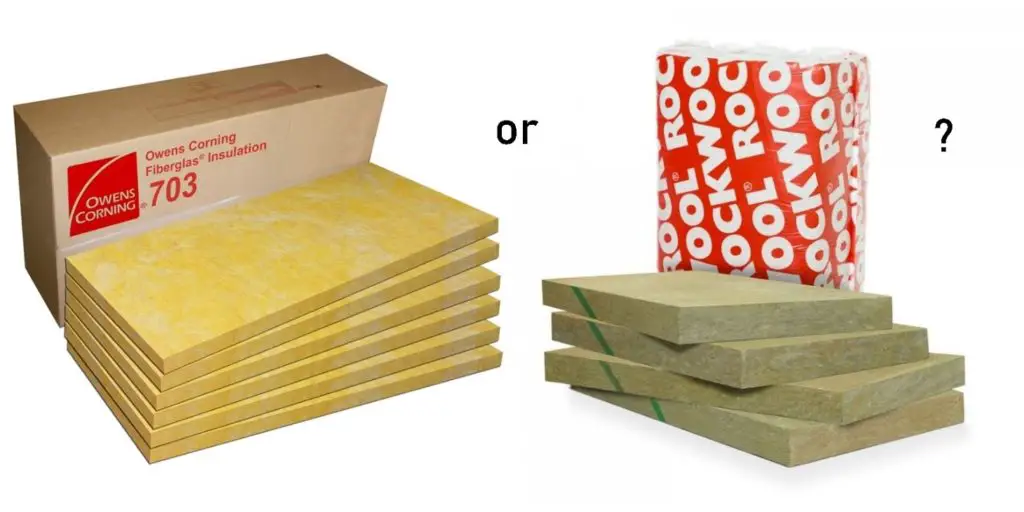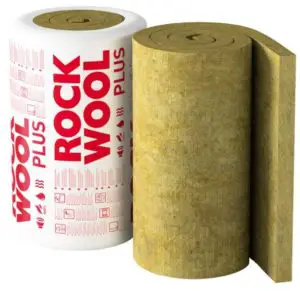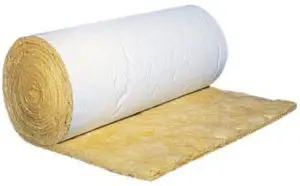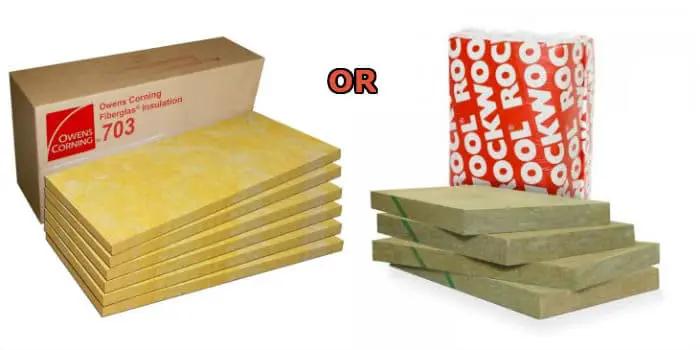How to choose the optimal soundproofing material for your needs
When you decide to soundproof a room inside your home or office, you need to pay attention to a few aspects.
Whether you choose rockwool or fiberglass to do the job, it needs to do more than block the sound. Fire codes and sustainability have to be included in the process.

Both materials give value to your project and come with benefits as well as drawbacks. We will discuss their particular characteristics and potential next steps. This way you can make an informed decision.
Is rockwool or fiberglass your material of choice?
Proper soundproofing will determine the quality of your environment. Whether in your home, office, or recording studio, preventing sound from causing damage is essential. But which one is a better option?
Soundproofing
They are both effective in reducing sound pollution and noise. Due to a greater density and weight, rockwool does a slightly better job in blocking sound.
Installation of the material and its quality contribute to the quality of soundproofing, but the density of rockwool helps reduce sound transmission of ~ 10 decibels through a wall. Fiberglass, on the other hand, blocks ~ 4 to 10 decibels.
Application
The fiber batts that compose the materials make the installation fairly easy. They can be included in interior walls without altering building structures.
Generally, to install any of the two, you need a hammer, stapler, cutting tool, and protective gear. The batts are pre-cut to size and fit into different cavities.
The temperature at installation is not relevant. They are flexible, can be refitted and reused, and require little time. Clean-ups are no headache, but you should be careful when handling fiberglass. The small particles of glass that come out when cutting it can cause work accidents.
Cost
Rockwool is more expensive than fiberglass.
Fiberglass costs around $0.50 per square foot ($5 per square meter). Rockwool is valued at ~ $1.3 per square feet ($13 per square meter) on the market.
When it comes to price, you need to consider the area you want to soundproof and its purpose. Rockwool is denser and does a better proofing job. Fiberglass can be added in layers to obtain a better effect. However, adding layers means buying more material.
In the end, you need to compare the cost and efficiency ratio and decide on your investment.
Structure
Fiberglass is made out of fine strands of woven glass that come in rolls or blankets of material. The shape and size variety makes it fit into any wall cavities.
Rockwool has a similar structure, only the fibers are stone-made. Its gap filling properties and adaptability to spaces and structures is quite similar.
Sustainability
Both materials are eco-friendly. However, rockwool comes packed with 75% recyclable contents. Fiberglass contains on average 20-30% recyclable components according to the U.S. Department of Energy.
Fire safety
Rockwool and fiberglass alike are mineral-sourced materials. Their response to heat and fire hazards is a big advantage. Neither is flammable, and they don’t sustain fire or help it spread either. But, due to its higher density, rockwool is more resistant than fiberglass.
Rockwool can withstand temperatures of up to 1000° C (1800° F), while fiberglass melts around 600° C (1100° F). Rockwool would be a more efficient choice for fire protection.
R-Value (Thermal properties)
The R-value measures the thermal resistance of a wall. A material with a higher value will be better at controlling the heat transfer. If you plan to add thermic insulation to your room as well, consider this:
Fiberglass has an R-value of 2.2 – 2.7 per inch, while rockwool has an index of 3.0 – 3.3 per inch. This makes rockwool a little better at insulating than fiberglass.
General use of rockwool and fiberglass
Both materials are versatile and popular choices among constructors. Fiberglass has a longer history than its opponent with application in numerous industries. However, rockwool doesn’t shy away from adapting to various purposes.
Rockwool
Insulation is rockwool’s main use. You can use it to insulate:
- exterior & interior walls – good for different structures, steel or wood stud walls. Good for exterior walls with various systems such as cavity walls, curtain walls, rain screens, wood, or metal frames.
- ceilings – the material is adaptable and can be used in ceilings as diverse as church arches, ceilings with wooden frames, or other designs.
- floors – steel stud, wooden framed, or under the slab, you name it. Rockwool can fit in and properly insulate.
- roofs & attics – by insulating the roof and/or attic, you save energy by minimizing the heat loss during cold seasons.
- industrial insulation
- marine insulation
Other efficient uses:
- soundproofing – media rooms, music studios, etc.
- plant growth – widely used as soil for plants, it comes in different forms and sizes. Cubes are used for starting seeds and germinating. It allows the air to flow in and out and is strong enough to offer support for the roots. It is lightweight, and it can be reused and has a natural pH that stimulated plant growth.
It is well-suited for spaces oriented to the north side of a building that tends to be colder.
Fiberglass
Thanks to its durability, safety profile, and good thermal properties, fiberglass is going into a wide range of industries and products. Here are some of the applications for this versatile material:
- Chemical industry –anti-slip safety feature and resistance to different chemical compounds.
- Marine industry – protection against corrosion, rust, and general damage caused by the salty water.
- Food processing – used in chicken and beef factories for grating.
- Carwashes – used for its resistance to rust and for creating color contrast. Cars look cleaner when getting out of the carwash tunnel.
- Beverage industry – used in brewing and bottling lines of the production.
- Cooling towers – used to keep people away from the danger zones. Anti-rust for the mechanical parts that are always wet.
- Power plants – because it is non-conductive, fiberglass is used in power generating industries for safety.
- Automotive, aerospace, & defense – various body parts and components are made out of fiberglass.
Fiberglass can offer valuable support in terms of safety, protection, isolation, or waste reduction. All these features make it a go-to material that is also affordable.
What is rockwool?

Also known as stone or mineral wool, rockwool is an organic material obtained from stones or rocks. This explains the name as well.
How it’s made: Natural rock is heated up to 3000 degrees until it melts. The magma-looking liquid goes through a high-pressure air or steam jet. Then, you obtain fiber strands through a process of high-speed spinning. Imagine cotton candy machines, only bigger and stronger. Finally, the fiber strands are compressed into thick and dense mats cut into panels of rockwool batts. That’s the simplified version!
Characteristics
Acoustic capabilities
Very high performance with sound reduction. Rockwool has a porous structure that absorbs sound efficiently. It can isolate and control the noise and vibrations coming from various sources (airports, trams, trains, music, etc.). The high density of the material blocks the airflow that carries noise, making even the noisiest environments bearable.
Fire resilience
Retains heat and prevents fire from spreading. It is a resilient material, and it does not produce toxic emissions of smoke or other residues. Rockwool meets the fire safety criteria.
Thermal properties
Very good at keeping the heat in. The air is retained due to the small pockets of air inside the structure. In summer, it keeps the hot air out. In winter, it keeps the warm air in.
Breathability
Lets the moisture circulate. It can retain water or let it escape, depending on your needs. Good ventilation prevents mold and mildew formation, thus making for a healthy environment.
Sustainability
100% organic, made out of natural, raw materials. Also, the content is up to 75% recyclable.
Fitting
Dense material with firm batts that allow sealing of air gaps. You don’t need any stapling and can cut it to size for any type of structure.
What is fiberglass?

As the name suggests, fiberglass is obtained from glass. It is basically reinforced glass fibers that molded into various shapes.
How it’s made
The glass is heated until it melts. Then, the molten glass is pushed through tiny holes to create thin filaments. These tiny threads are then woven into larger patches of material or left in bulks of less structured material.
The fiberglass can have resins added to it for strength and made into different shapes and forms. You can get fiberglass in sheets, mats, panels, or custom-made. It depends on the purpose.
Characteristics
Acoustic properties
It is a very good sound blocking qualities. It is packed with tiny air pockets that trap the sound and prevent it from getting through. A sheet of fiberglass as thin as 5 cm (2 inches) can cancel noise coming from train tracks.
Fire safety
Made of a mineral material. Because of its nature, it does not ignite and keeps the fire from spreading. When exposed to heat, it doesn’t create toxic emissions.
Durability & strength
has a long lifespan. From a mechanical point of view, the material is highly resistant. It can surpass steel and performs well with temperature variations. It doesn’t change size or shape under different temperatures.
Thermal properties
is a popular and efficient choice for thermal insulation. The tiny air pockets in its structure do a great job retaining hot air and preventing heat from getting out.
Sustainability
Made out of natural minerals and is eco-friendly. Its content is high in recyclable and renewable material that has a positive impact on our carbon footprint. It can be removed and reinstalled, and it produces more energy than it takes to make it.
Fitting
Is one of the most versatile materials. It can be cut into any size or shape and fitted into stud walls or any type of structure.
Other soundproofing materials

The market provides us with many options for our sound reducing needs. Because of their various uses and structures, these materials cannot fall under only one category. Some are good at absorbing the sound and some have dampening qualities, while others can cancel the noise altogether.
Acoustic foam
Effective with absorbing sound. It comes in various forms: panels for walls, baffles for ceilings, or corner set-ups that act as bass traps.
Acoustic panels/boards
A variation of acoustic foam. They act as decorative sound-absorbing accessories. Easy to apply, they range in colors and patterns and ideal for minimal noise reduction in any room.
Acoustic fabrics/curtains
Thick and dense fabrics most often used in movie and theater halls.
Acoustic coatings
Made out of a dense rubber material (Mass Loaded Vinyl). They act as sound barriers installed in cars or appliances as an underlayment.

Drywall
It is a common material used to keep sound at bay. Soundproof drywall is a combination of layers that contain gypsum or steel to increase density.
Resilient Channels
Rails of sheet metal designed to wall studs and ceiling joists. It traps the sound and redirects it, instead of going straight through the wall.
What is soundproofing?
Firstly, you need to ask yourself what is the result you want to accomplish.
Sound moves through the air. This means that, in order to reduce it, we need to fill in the air space more between our room and other noise sources.
Insulation comes in at this stage to reduce the transfer of sound through the air.
The material used determines how much sound will vibrate and then pass through to the other side. Depending on the structure of your walls, both fiberglass and rock wool can be adapted to fit in.
Conclusion
Soundproofing is quite controversial and no expert could state plain and clear what is a better choice. Both fiberglass and rockwool are great at blocking sound. Plus, they are easy to use, sustainable, and comply with safety dynamics. What will it be?
